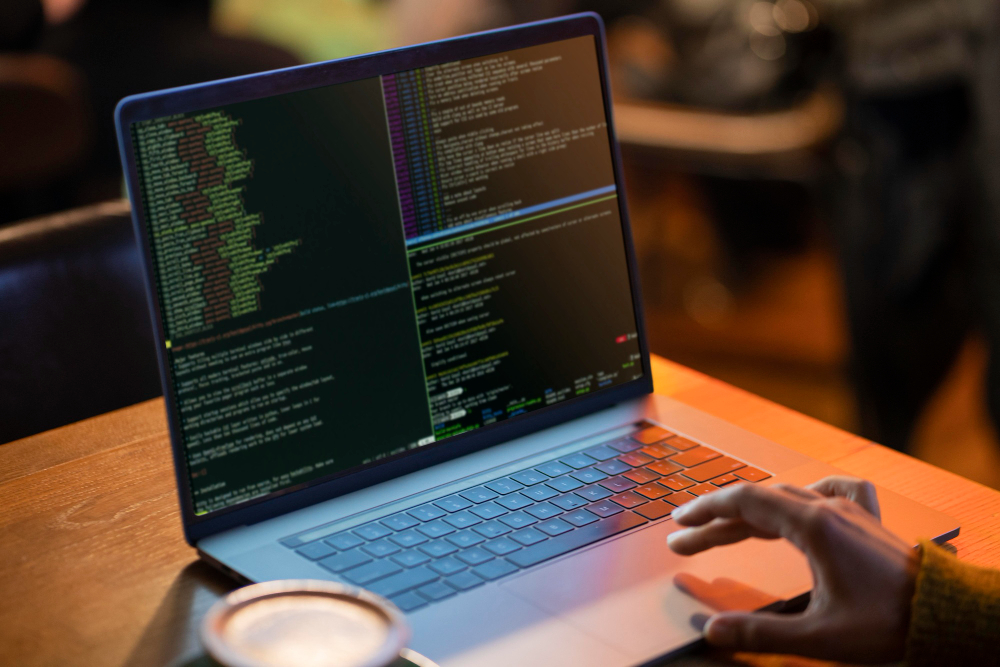Unraveling the syntax errors meaning, we embark on a journey through the labyrinth of language’s structural nuances.
Exploring the world of programming online understanding the rules of a programming language is as important as learning the structure of a spoken language. Similar to how mistakes in grammar can confuse conversations errors in syntax while coding can stop the program suddenly. This interruption can cause a series of challenges for programmers, those who are new, to it.
When it comes to programming languages, Python is known for its straightforward syntax. Nevertheless, it is still susceptible to the nuisance of syntax errors. This in depth investigation seeks to illuminate the issue of syntax errors in Python delving into their causes, impacts and strategies for fixing them. The objective here is to provide developers with the knowledge required to tackle these obstacles facilitating a smoother path, towards writing code that is both seamless and effective.
What Are Syntax Errors in Python?
In Python development syntax errors occur when the code doesn’t follow the established rules. These rules determine how programs should be organized and how elements like variables, operations and control flow are properly expressed.
If there’s a violation of these rules, it disrupts communication with the interpreter. Triggers an error message that stops the program execution. It’s crucial for developers to grasp the syntax thoroughly because even slight deviations can lead to errors that prevent the code from running.

Common Causes of Syntax Errors
Navigating through Python code, syntax errors often spring from simple oversights, easily overlooked in the coding process. Common culprits include:
Missing punctuation: The codes logical structure may be disrupted if there are no colons, commas or parentheses present which could cause confusion, for the interpreter.
Improper indentation: Python has a feature where indentation is used to separate code blocks. Any irregularities, in spacing could lead to syntax errors underlining the importance of paying attention to indentation.
Misspelled keywords: Mistakes like spelling errors in Python keywords (such as typing ‘fro’ instead of ‘, for’) can cause syntax issues highlighting the significance of precision in programming.
Incorrect use of operators: The incorrect use of assignment, comparison or logical operators can result in syntax errors underscoring the importance of having a grasp of how operators work and are used.
Python Syntax Errors Meaning

When the Python interpreter encounters code that doesn’t follow its syntax rules it causes a syntax error. These errors act like obstacles in the code execution process making the interpreter halt and alerting about the issue. T
he purpose of these alerts, known as syntax error messages is not to indicate a problem but also to offer useful hints, for identifying and fixing it. Lets explore further into how these messages are structured and the helpful information they provide to developers.
The Anatomy of A Syntax Error Message
Syntax errors meaning in Python typically contains several key components:
Error Type: The message starts by pointing out a syntax error clearly stating it as such. This immediate classification alerts the programmer that the problem’s, with the codes structure, not its logic or how it runs.
Location: One of the things to note is the line number. Python tries its best to indicate the line where it noticed the syntax error. This pinpointing helps narrow down the search, for the problematic code section. In situations that’re more intricate Python may also indicate the specific column where the error occurred, providing even more detailed guidance.
Offending Code Snippet: When trying to figure out the issue error messages, usually show a part of the code that triggered the problem. This section includes a caret (^) pointing to the spot where things went wrong helping developers quickly understand what caused the error.
Description of the Error: The interpreter also gives an explanation of the error aiming to clarify which part of the syntax rule was broken, like “unexpected EOF while parsing” or “invalid syntax.” While these explanations can be puzzling for newcomers they are designed to help programmers grasp the errors essence.
Interpreting Syntax Errors Meaning
To grasp syntax errors meaning, you need some practice and a good handle, on Pythons syntax guidelines. Here are a few tips to help you better understand these messages:
Start at the indicated line: Make sure to start your investigation from the specified line number. Keep in mind that the error could be, before that. Syntax errors can be tricky because they may not always point directly to where the problem lies especially if its related to parentheses or other issues that span across multiple lines logically.
Consult the Python documentation: If the error message is unclear it can be helpful to check the Python documentation for information. The documentation includes explanations of syntax guidelines and typical error messages making it a valuable tool, for problem solving.
Use additional tools: IDEs and linters provide explanations for syntax errors and may offer suggestions, for fixes. These tools review your code as you work pointing out errors before you execute the script, which helps in resolving issues proactively.
Learning from Syntax Errors
Syntax mistakes can sometimes be annoying. They offer valuable chances to learn. Every error a programmer faces helps them grasp Pythons syntax better encouraging them to write code that’s both precise and effective. With practice developers become skilled, at predicting and steering clear of errors resulting in a more seamless and enjoyable coding journey.
The significance of a Python syntax error extends further, than pointing out a mistake. It acts as a mentor, an opportunity and an encouragement to explore the complexities of the language paving the way for programmers to become more skilled and self assured.
How Python Interprets Code and How It Affects Python Syntax Errors
To grasp the way Python interprets code it’s crucial for spotting and fixing syntax errors in Python scripts. Lets delve into a look, at this complex process.
Lexing: Lexing, also known as analysis is the initial step in compiling or interpreting code. The Python interpreter carefully breaks down the source code into tokens, each representing important elements of Python syntax such, as keywords, names, values and symbols.
Parsing: After going through the lexing and parsing stages to interpret Python code it meticulously follows the language rules to analyze the sequence produced during lexing shaping them into a structured form usually a parse tree or Abstract Syntax Tree (AST). This syntactic arrangement helps in grasping the programs progression.
Compiling: After the lexing and parsing stages are finished the compilation process begins, converting the AST into bytecode. Bytecode is a condensed version of machine instructions that is not tied to a platform. Each bytecode instruction represents tasks such, as math calculations or calling functions making it easier for the Python interpreter to execute them efficiently.
Interpreting: Pythons interpretive journey reaches its peak during the interpretation stage. In this phase the bytecode derived from the source code is executed within the Python Virtual Machine (PVM). The PVM precisely handles each bytecode instruction overseeing tasks that include computations and memory organization.
One major benefit of this method is its ability to work across different platforms without any issues. Python bytecode can smoothly operate on platforms using a Python interpreter removing worries, about compatibility.
Pythons interpretive quality sets it apart from compiled languages such, as C or C++ providing developers with a mix of coding simplicity and debugging convenience although speed of execution may be compromised.
Understanding the aspects of Pythons interpretation allows developers to efficiently handle syntax mistakes and leverage Pythons interpretative capabilities to build strong cross platform applications.
How to Fix Syntax Errors
Syntax mistakes can briefly pause the process of turning ideas into working Python code. These mistakes, which indicate departures, from Pythons syntax guidelines shouldn’t stop progress. Instead they can serve as chances to learn, steering developers towards coding habits. Lets delve into a series of techniques accompanied by code illustrations to efficiently tackle and fix syntax errors in Python.
Attentively Read the Error Message
When you encounter a syntax error, in Python the error message provided aims to give hints on what went wrong and where. It’s crucial to grasp these messages as a starting point to fix the issue.
Example:
for i in range(10)
print(i)Error Message:
File "<stdin>", line 1
for i in range(10)
^
SyntaxError: invalid syntax
Resolution Strategy
The caret (^) points to where Python encountered unexpected syntax—in this case, the missing colon at the end of the for statement. Adding the colon resolves the error:
for i in range(10):
print(i)
Check for Common Mistakes
Syntax errors are often seen because of mistakes that people make. Checking your code for these errors can help you solve problems quickly.
Common Mistakes Include:
- Missing colons (:) after def, for, if, elif, else, while, and class statements.
- Incorrect indentation or mixed tabs and spaces, which can be particularly tricky to spot.
- Unmatched parentheses (), brackets [], or braces {}.
- Misspelled Python keywords or incorrect variable names.
Utilize a Code Editor or IDE
In todays Integrated Development Environments (IDEs) and code editors there are tools, like syntax highlighting and error detection that can spot syntax errors and sometimes even offer solutions to correct them.
Example: When you work with an IDE such as PyCharm, VS Code or even a browser based editor like Replit it can quickly point out syntax errors even before you execute the code. These tools also help in organizing your code by ensuring proper indentation and identifying issues, like unmatched parentheses or incorrectly spelled keywords.
Debug Step by Step
If you can’t spot the mistake away try a methodical approach by commenting out parts of your code one, by one and then reintroducing them gradually to pinpoint the problem.
# Comment out sections of your code
# for i in range(10):
# print(i)
# Gradually reintroduce sections
for i in range(10):
print(i) # Uncomment and test this block
Seek Help
If you’re stuck and can’t figure out an error message turning to the Python community for assistance can be really helpful. Websites such, as Stack Overflow, Reddits r/learnpython or even Pythons own documentation are places to get advice and find solutions.
Example:
- Post your error message and a snippet of your code on Stack Overflow, providing details about what you were attempting to achieve. Be sure to check if the question has already been answered.
- Consult the Python documentation for examples of correct syntax and compare them with your code to spot differences.
Conclusion
Syntax mistakes in Python though frequent and occasionally vexing are a component of developers learning journey. Grasping the triggers of these errors and mastering how to resolve them is pivotal, in honing the ability to produce neat error free code.
By examining your codes arrangement and making use of accessible tools and references you can reduce syntax blunders and concentrate on the imaginative facets of coding. Keep in mind that each mistake presents a chance to enhance your coding proficiency.
Discover how IPWAY’s innovative solutions can revolutionize your web scraping experience for a better and more efficient approach.
